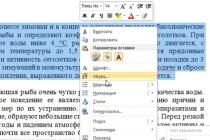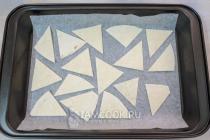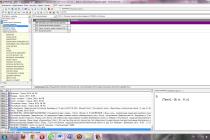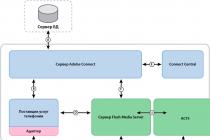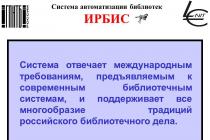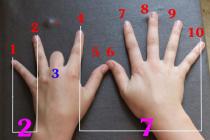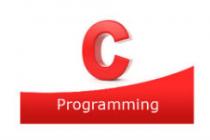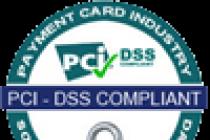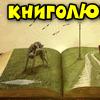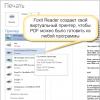In life, people who are able to calculate in their minds look like "super smart", although there is nothing complicated about it. Calculator is a calculator, but it is useful to count in your head!
How to help your child learn the multiplication table
Some simple tricks are outlined below.
Multiplication by 2 or doubling. Doubling is pretty easy, just add something to yourself. First, I showed on my left and right hand simultaneously one, two, three, four, five fingers - this is how we got 2, 4, 6, 8, 10. Together with the fingers of my student, we reached twenty, and then I pointed to different things in the room, and suggested counting and doubling - the number of letters in the poster, the number of characters on the clock face, counting the number of spokes on one side of the bicycle wheel, and checking if the total would converge with the doubled, and so on.
Multiplication by 4 and 8, 3 and 6
When you know how to multiply by two, it's sheer trifles. Multiplying by four is the same as doubling the answer for something that has already been doubled, for example, 7 × 4 is 7 × 2x2, and that 7 × 2 is 14 we already well remembered in the previous lesson about doubling, so turn 14 itself into 28 will not be difficult. Once you've figured out the four, it's not too difficult to figure out the big eight. On the way, we noticed that, for example, 16 is both 2 × 8 and 4 × 4. This is how we learned that there are numbers consisting entirely of twos: 2, 4, 8, 16, 32, 64.
By multiplying by 3 and 6, we learned the old pirate divide by three method. If you add the digits in a number multiplied by 3, 6 or any other that is divisible by three, then the result of adding the digits of the answer is always a multiple of three. For example, 3 × 5 = 15, 1 + 5 = 6. Or 6 × 8 = 48, and 4 + 8 = 12, a multiple of three. Or you can add the numbers to 12, you get 3 too, so if you go to the end like this, you always get one of three numbers: 3, 6 or 9.
So we turned it into another game. I asked a number, even a three- or four-digit number, and asked if it is divisible by 3. To answer, it is enough to add the numbers, which is quite simple. If the number was divisible by 3, then I asked - "and by 6?" - and then you just had to see if it was even. And then (in the special case of small numbers from the table) sometimes I also wanted to know what would happen with such a division by 3 or 6. It was a very fun activity.
Multiplication by 5 and 7, prime numbers
And now we have multiplication by five, seven, and nine. And this means that we have learned to multiply them by many other numbers - by 1, 2, 3, 4, 6, 8 and 10. We figured out the five very quickly - it is easy to remember: at the end there is either a zero or five, exactly the same as a multiplied number: either even or odd. The dial of a watch is perfect as an object on which it is convenient to study with fives, you can come up with many problems about traveling in time and space. At the same time, I told why there are sixty minutes in an hour, and we understood how convenient it is.
We saw that 60 is convenient to divide by 1, 2, 3, 4, 5, 6, and it is inconvenient to divide by 7. Therefore, it was high time to take a closer look at this number. From multiplying by seven, only 7 × 7 and 7 × 9 remained to be remembered. Now we knew almost everything we needed. I explained that seven is just a very proud number - such numbers are called prime, they are divisible only by 1 and by themselves.
Math can be fun and easy. Check out this cute table.
If you study it thoughtfully, there isn't much to learn. A total of 36 positions. The rest are either simple (1 x 10) or reversible (2 x 4 = 4 x 2). Minus 10 positions from the multiplication table by 9. It can be learned in 5 minutes. There is such a trick:
So let's go.

First, put your hands on the table and mentally number your fingers from left to right from 1 to 10. To perform the multiplication action, let's say 9 x 3 =?, bend the third finger from the left. Everything! The answer is ready: the fingers left not bent on the left form the number of tens in the answer, and not bent on the right - the number of units. We count and say the answer: 27!

Thus, you can get the answer for any number. Here, for example, an example 9 x 7 = 63
watch the multiplication by 9 in the video:
This article is about how to learn the multiplication table without pain and cramming. In it we tell you how to learn how to multiply numbers up to 10 by each other, memorizing only 36 examples instead of 100. We also show 5 useful games and a couple of life hacks that will help you learn the multiplication table not only quickly, but also fun.
Turning 100 Examples into 36
The multiplication table on the back of most notebooks looks like this:
It can take a whole summer to learn it. It is clear that memorizing the correct answers to hundreds of examples mechanically is the most time consuming way to memorize the results of multiplying numbers up to 10 by each other.
The process is greatly accelerated when we show how all these 100 combinations can be reduced to 36. In this case, the Pythagorean table is a much more successful visual aid:

Using her example, you can already show the principles of multiplication through the areas of small rectangles:
- 3 * 5 = 15, because 15 small squares are placed in a rectangle with sides of 3 and 5 cells (we count them together to make sure).
- 5 * 3 = 15 for the same reason (counting together).
 Here we clearly demonstrate the property of commutativity: the product does not change from the permutation of the places of the factors. Of course, it is better to keep the name of this property until Halloween, so as not to frighten anyone ahead of time :)
Here we clearly demonstrate the property of commutativity: the product does not change from the permutation of the places of the factors. Of course, it is better to keep the name of this property until Halloween, so as not to frighten anyone ahead of time :)
Because of this, the Pythagorean table is symmetrical about its diagonal, so 55 out of 100 examples remain to remember: the diagonal itself with values 1, 4, 9, ..., 100 and everything that is above or below.
 This discovery can be made independently by filling in the part of the empty Pythagorean table, in which only the factors are initially marked:
This discovery can be made independently by filling in the part of the empty Pythagorean table, in which only the factors are initially marked:

A child can begin to fill it out, even if he does not yet know the rules of multiplication - he already knows how to add, so he can easily count first 2 + 2, then 4 + 2, then 6 + 2, and so on, up to 20. Then a row of triplets , etc.

Having filled in only part of the table (for example, a square of 6 * 6 cells), you can already see the same numbers and understand that you do not need to cram it entirely.
After that, on the same Pythagorean table, we demonstrate two principles that allow us to “automate” 19 more multiplication operations: multiplication by 1 and multiplication by 10:
- If the number is multiplied by one, it does not change in any way. ...
- If a number is multiplied by 10, it ends up with a zero.
We subtract from the remaining 55 examples by multiplying 19 more "automated" ones and we get a total of 36 combinations that need to be remembered. Almost three times less than what is offered to us on the covers of notebooks!
It's already easier, isn't it?
We play and remember
It is difficult to remember what cannot be applied in life. This is why it is important to show that the multiplication table can be useful. This will help games and fun activities.
Big snowfall
These tasks will allow the child to be in a situation where multiplication is indispensable. In the process of solving problems, the child understands that it is not necessary to count the square tiles every time - it is enough to multiply the length by the width!

Battle of rectangles
This is a simple game for two people to understand multiplication and area of a rectangle.
You will need 2 felt-tip pens, a squared sheet of paper and 2 cubes. Each player chooses the color of a pencil or felt-tip pen with which he will draw.
Players take turns. The first player rolls 2 dice. Then he must draw on a piece of paper on his side a rectangle or square, the sides of which are equal in number of cells to the numbers on the cubes. In the middle of the figure, its area is recorded - how many cells the figure occupies. The second player walks down next, and so on.
The game ends when there is no more room for new pieces on the sheet. The winner is the one whose pieces occupy more cells on the sheet of paper.
Multiplication fishing game
With this game, children can easily figure out the principle of multiplication: why two by four will be eight, or three by three will be nine. In the game, you can only catch the number of fish that is a multiple of 2 or 3. And to get them, you have to pick up the correct cards.
Preparation
To play, print the game board, at least 4 pages with fish and a net for each player. Prepare a dice, pieces for each player, and pen and paper.

How to play
Players take turns throwing a die and moving around the field. If a player stops on a cage with an animal, then he does not receive fish.
If the player stops on the square with the words, then he catches the specified number of fish - takes the cards and puts them in his net.
When all the players have reached the end, we calculate the catch. Whoever had more fish in the nets won.

Board game
There are many, many useful and entertaining things in this game. But most importantly, the main part of the multiplication table is in your pocket! Without boring memorization, the child learns to multiply numbers from 1 to 5. The game is based on a unique technique that helps children see with their own eyes what multiplication is, and even hold it in their hands. And this is so important for the first steps in arithmetic.

The game set includes cards depicting houses, the windows in these houses are transparent - this is the main feature of the technique! By connecting two cards with the number of windows "two" and "three" you will get a house in which the number of windows will be "six": 2x3 = 6.
 The houses themselves are painted in a very bright and unusual way, just looking at them is a separate pleasure. The set also includes cards with tasks, a game token, a cute storage bag made of waterproof fabric and detailed instructions with original illustrations.
The houses themselves are painted in a very bright and unusual way, just looking at them is a separate pleasure. The set also includes cards with tasks, a game token, a cute storage bag made of waterproof fabric and detailed instructions with original illustrations.


There are two variants of the game in "Many-Many". Both have the ability to adjust the difficulty of the game to suit your child. Both versions of the game will be fun both for those who are just starting to get acquainted with the multiplication table, and for those who already know it well.
Board game
Players will perform many interesting actions: plant flowers in flower beds, uproot them if necessary, arrange surprises for their competitors - pleasant and not so much. But the main thing for the participants is to fulfill orders with precision: you need to grow on your flower beds exactly as many flowers as the buyer wants. In the process of playing, children in practice are convinced that to fulfill an order for 18 flowers, it is necessary to collect 3 flower beds of 6 flowers each. Such visual operations will be remembered quickly and for a long time.

The goal of the game is to earn as many coins as possible. The number of coins is indicated on the buyer's card - some have more, some have less. Everything is like in life. Three square cards with buyers are laid out on the table, on which the required number of colors is indicated. During the game, participants plant three beds of cards with the same number of flowers in order to grow the required number of flowers for sale: three beds of seven flowers to get "21", six beds of nine flowers to get "54" and so on.

In the game, you can be mischievous - toss moles and beetles to other players, or, on the contrary, give gifts. There are also cards with magic watering cans in the deck - they multiply the number of flowers in a flowerbed by 2 or 3. And sometimes this is just an invaluable help!
Life hack: multiply by 9 with your fingers
Multiplying by 9 is often the hardest part. To make this process easier and more fun, you can use a hint - your own palms!
Turn your hands with your palms facing you and mentally number your fingers in order from left to right, from 1 to 10.
Now we multiply, for example, 7x9. We bend the seventh finger counting from left to right.
The number of fingers up to the curved one is tens, in our example it is "6".
The number of fingers after the bent one is units, that is, "3".
As a result, we get 63!


Colorful posters
To make the multiplication table easier, we have prepared bright posters for you that you can print and hang in a conspicuous place.

To make the process of studying the table more dynamic, you can paint over or stick with stickers the values that are already well fixed in your memory.
And finally
It is not so important how exactly you will learn the multiplication table: the main thing is to do it with pleasure - after all, this way knowledge is acquired much better, and the process becomes pleasant and interesting!
How easy it is for a child to learn the multiplication table - this is the question the parent asks, realizing that cramming numbers does not lead to an understanding of the process. Although for children with a good memory, this will be the easiest way. Today we will talk about interesting games (not computer games) that will make it possible to understand the essence of mathematical actions and consolidate their knowledge.
Greetings, dear readers. I assure you that in the article you will find interesting games, which took me from 2 to 5 minutes to prepare. If you set out to explain to your child the meaning of this mathematical process, then sit back and read carefully. As always, I advise you to select tasks according to your level of knowledge.
The first thing you want to do when introducing new material is to explain who the founder of the method is. Unfortunately, the question of who came up with the multiplication table in mathematics is not so simple. We are accustomed to believe that its founder is the ancient Greek creator of the philosophical school - Pythagoras. For many, his name is synonymous with the discussed method of calculations, but it turns out that it is called so only in Russian, French, Italian.

There is no evidence that it was this mathematician who was her progenitor - no! But there is plenty of feedback. It turns out that the oldest table was discovered in Ancient Mesopotamia, its age is more than 4000 years. While Pythagoras lived 570-490. BC. There are also facts of similar calculations in ancient China. I really liked the explanation of Professor Kruglov, which he gave to the student of the 3rd grade:
I am writing all this so that you do not confuse your children. Indeed, many parents who piously believe in our educational system will not even think to look into the search for information, but will foaming at the mouth to prove to their offspring that the table was created by Pythagoras.
If you want to tell your children about this scientist, then you should use the information from Wikipedia, where his scientific achievements are described in detail. But all this will be interesting for older students. And at what age do they begin to learn the subject of our discussion?
In the Soviet Union, I hope I am not the only one who remembers this time, they asked this program for the summer after the 1st grade. Nowadays, in most schools, the multiplication table is taught in the second half of the second grade. My son is studying at the French Lyceum in the Dominican Republic, in the 2nd grade. I wrote about why a six-year-old child is in grade 2.
I'll tell you how they started to introduce this “science”. Almost from the beginning of the school year, children began to go through the composition of the number by adding two identical numbers.
In other words, a homework assignment could be as follows:
Write down which equal numbers the numbers 26, 32, 48, 65 consist of.
Yes, yes, there will definitely be a trick. The child writes down, for example:
26=13+13
65 - the addition of two equal numbers is impossible (at this stage, this is the correct answer).
As a result, in a month and a half, children easily mastered multiplication and division by 2 within 100, without even realizing it. I don't know how the program will develop further, but I liked the beginning.
At 3.5 years old, my son laid out cards, say in fours, like this:

It was his little victory! As you can see, the counting is quite clear, the child can visually assess the correctness of his mathematical work. A year later, such classes looked different. I shuffled all the cards:


And knowing that my boy has a competitive character, I offered him to put together a “counting ruler” for speed. For example, he collects the line with the same fours, and me with sevens. Of course, every time the numbers changed so that everything was mastered up to 10. I had to make copies of several cards so that it was enough to collect two rulers.
So, the count of fours in a year looked like this:


Well, we have found out in which class they learn the multiplication table and how you can prepare a child for its study. And how else can you help to learn the subject without cramming, what additional materials will help with this?
Useful learning materials
If a child has a craving for musical training, then such a song will help to learn the count of 3. My son loves a cartoon about these birds and he also loves to sing along, so after two views, the three was learned.
Through the book, you can also help the child learn the table. I will show you two wonderful examples.
The first "Fun Table" from Robins Publishing House. Highly recommend! Firstly, the actions presented here are given not until 10, but up to 12. Secondly, the fabulous windows have not left a single child indifferent. Thirdly, these are not bare numbers, but the ability to easily test yourself using funny pictures. And at the end there is an opportunity to really pass the test of your knowledge.

How easy is it for a child to learn the multiplication table? In funny verses! And the second copy will help us with this. It's really wonderful book, with which Alexander did not part for a week! Andrei Usachev, using humor, was able to reproduce arithmetic operations, tying them to the most unexpected characters. AST Publishing House, as always, pleased with the excellent quality and this small book has become on the shelves of our child library. The only thing I want to warn you about is that multiplication by 2 starts with two, by 3 from three, by 4 from four, and so on. But here the "transposition law" is included.

And last, but no less useful material on the author's method of Shamil Akhmadullin "How to learn the multiplication table in 3 days in a playful way?" The point here is understanding the principles, and this is so important!

And finally, we came to entertaining activities with you.
How easy it is for a child to learn the multiplication table through a game
Everywhere they say and write about the positive impact of activities in a playful way, I described ours not so long ago. This time I had to master new ones - for multiplication. I composed them and led them incrementally, observed my son's capabilities and moved on.
Where to begin
You need to start with a visual explanation. This can be done with buttons, sticks, and counting bears. The child should see the rows of objects that need to be counted. I gave my son his favorite shells, in the photo we disassemble 5 × 2, that is, 2 rows of 5 shells each. If after giving several examples with different numbers, you see that the essence is understood, proceed to the game actions, do not delay this process.


It is also worth explaining that by rearranging the numbers, the answer will not change. The second grader is already familiar with the "transpositional law of addition." In practice, let him see that it also applies to this mathematical process. Ask to lay out the action “in reverse,” in our case 2 × 5 - two shells in a row, and five rows.


If the rule was not well understood at school, or you are studying with a preschooler, I advise you to watch a video from Shishka's school:
Game one
We need:
- Paper;
- Ruler and pencil;
- zariki cubes;
- felt-tip pens.
Draw a sheet of paper into sections. Each section will have room for one example.


The player rolls the dice and looks:
- One cube shows the number of circles to be drawn;
- the second is the number of crosses to be placed in these circles.
It is interesting to play in groups of 2-4 players, so there will be a competitive spirit. The dice should be thrown in turn, and the results should be written on each sheet. The winner is the one with the most correct answers.
My son and I played together. At the end, we exchanged sheets, I asked him to check my answers, and I checked him myself. But not from memory, but by counting the number of crosses in each. Thus, Alexander could easily see what the numbers were composed of. This is a kind of recount of seashells, where, in case of doubt, you can recount the crosses at runtime.
 Photo enlarges when clicked
Photo enlarges when clicked Game two
Almost all children love Lego, but is there a mathematical game with it to develop creative thinking and attentiveness? Yes! If you wondered how easy it is to learn the multiplication table for a child who loves Lego, then the answer is waiting for you here!
We need:
- Lego blocks of different calibers;
- construction stands;
- pens;
- small pieces of paper.

The process allows you to have a visual model and recalculate points if necessary. Here, too, you can arrange a competition. Do not feel that this is not fair to your student. Think better that by observing your actions, he will quickly learn to do like you, and then better than you.
So, we propose to compile the largest number of examples on the given board. They can be absolutely anything. Some child wants to stay in the “comfort zone” and will compose them from small details. The other will deliberately want to show that he can work with large numbers. After laying the blocks, you need to write examples and answers on prepared pieces of paper. The winner is the one who finished first, and most importantly, he counted correctly.
Alexander fell in love with this occupation, it is not surprising, I wrote separately about our buildings from. After playing several times, we came to the conclusion that the optimal time for spending is 10 minutes, a kitchen clock with an alarm helped us to control it. As soon as the bell rings, you need to stop. Thus, it is considered how many options each got, how many of them are correct, and the winner is selected. As before, I invite my son to check my answers, and I check him.
 Photo enlarges when clicked
Photo enlarges when clicked Game three
The fight is fought between two players, each of whom is trying to close the “field”.
We need:
- A sheet of paper in a box;
- zariki cubes;
- 2 different colors of markers or ballpoint pens.
Terms of play
- The first player casts shouts. The numbers that have dropped out must be multiplied among themselves. For example, the cubes stopped at 4 and 5, the player draws a set of 4 by 5 cells on paper. That is, with his felt-tip pen color he “takes” the cells and writes the example 4 × 5 = 20 inside.
- Now it's the opponent's turn, he does the same from the opposite end of the sheet.
- Subsequent moves have a rule: each next example must touch at least one side of another example of the same player. If he uses, for example, red, then he attaches his "lands" only to him.
- When there is little space left and amounts that do not fit into the remaining space fall out, a move is skipped.
- The one who fills all of his space first wins.

So if you are wondering how to help your child learn the multiplication table, this entertainment will help you. It also includes elements of competition. In the end, many moves are really skipped, when, for example, there is one free cell and only 1 × 1 is suitable.
Fourth game
These are already serious actions, albeit in a playful way. The advantage is that you can prepare cards with the correct numbers as you study. It is easy to make them yourself by drawing a sheet.
We will need:
- Chips - I have transparent dies from. You can use buttons, colored paper circles, or any other suitable material;
- cards with numbers, I laminated them, as they played many times;
- cubes shouting.
Terms of play
The players are given 10 chips, each must have its own color. In the middle of the table is a card with numbers that are obtained by multiplication. I did it until 12, i.e. every number from 2 to 10 was multiplied by 12.

- The first player rolls the dice, adds the resulting numbers and multiplies, for example, by 3. He puts his chip on the result.
- The opponent throws, repeating the action. If his piece should go to the place occupied by the opponent, he throws it away and bets his own.
- If any of the players hits the number twice, he puts a chip on top of his, thus blocking the place. The opponent can no longer throw it away.
- If a number that is blocked has dropped out, he skips a move. It doesn't matter if he blocked it himself or his opponent.
- Whoever is left without chips wins.


Fifth game
It is relatively easy to craft this skill set.
You will need:
- Ice cream sticks;
- felt-tip pens in black and red;
- paper;
- capacity along the length of the sticks.

Write various unanswered examples at the base of each stick. For every 10-15 - one word BOOM! I like to put 30-40 examples and 3-4 words BOOM.


You can easily adapt this activity to any level by simply changing the numbers. I prepared this lesson last, practically for training skills. Actions are composed from 2 to 9, multiplied by a number from 3 to 15. The first batch with small numbers is visible in the photo. You can make one jar for 2-6, another for 7-10 and, if desired, 11-15. So, insert the prepared material “face down” so that the children do not see what is written on it.

Terms of play
- The first player draws a wand; if an example is written on it, he reads it and then provides an answer. If it is correct, the child keeps the trophy. If it is not correct, he must return it to the container.
- The players continue in a circle answering the questions they pulled out.
- As soon as one of the players takes out BOOM !, all his accumulated trophies are returned to the container. It may sound harsh, but it happens a lot, so everyone who plays will get BOOM at some point!
- The process can take a very long time, because eventually someone will put all the chopsticks back down! If you want there to be a winner and the children are not tired, or there is simply an opportunity to complete without whims, then it is better to get a kitchen clock. By starting them for 15-20 minutes, for example, we count the sticks after the alarm goes off and the winner is the one who has the most of them.
Additionally
If you don't want to make a game with your own hands, then you can use a purchased one to hone your knowledge, for example, like this.
Are you going to study fractions with your child? A gang of clever guys has released an excellent game Delissimo. You can play it from the age of 6, but if you include it in your leisure time at home, a primary school student will definitely not have problems solving examples with fractions. Look in Maze... The video below explains the rules and levels of the game.
If your kids are gambling and want even more tabletop math fun, visit where she gives printable game cards.
Conclusion
Dear parents, I tried to show you the whole process, from start to finish, how easy it is for a child to learn the multiplication table. I like the idea more not to memorize the numbers and quickly get an A in my diary, but to guide the child's brain through a systematic understanding of what constitutes an example, in what ways the answer can be calculated. After all, our children will soon enter higher mathematics, and there you will not get out on one cramming. If you know you've used other games to teach your child the multiplication table, please share with me in the comments. In order not to lose the article, you can save it in social networks using the buttons below. Check out.
Knowledge of the multiplication table is indispensable, therefore it is included in the school curriculum already in primary grades. For a student, memorization is very difficult. Children get scared when the teacher points to the spread of the notebook, where examples to be learned are raised in columns.
Therefore, it is worth showing how to make memorization fast with games, multiplication secrets and useful algorithms.
The multiplication table (a game to quickly learn the memory algorithm is described below) was invented a long time ago. There is an opinion that the Pythagorean table was developed by an ancient philosopher and mathematician. But no confirmation has been found for this. But it is known that it was counted with the help of it already in ancient Japan, where during excavations they found wooden plates with parts of the table (8th century).
Scientists suggest that the table came to Japan through China. In those days, the countries closely interacted. Japanese residents came to the Celestial Empire to study sciences. A find at least 3 thousand years old in the form of a separate fragment of the table confirms the assumption that the table was created in China.
Some experts suggest that the table by trade caravans penetrated from China to India, and from there it has already spread to all other countries.
Another version says: tablets with numbers were found 5 thousand years ago in Mesopotamia. Perhaps it was there that she was invented. In addition, it could have been invented in several countries at the same time, because already at that time the need for calculating large numbers was clear.
In which class are they learning the multiplication table
In Russian schools, they begin to study the table in grade 2. And by the beginning of grade 4, teachers are trying to complete memorization. However, the most commonly used standard method is memorization. It is ineffective, so some students, right up to graduation, peep at the answers on the back of the notebook.
How to teach a child to multiply
First of all, the child needs to be interested. Moreover, it is worth starting the study together, and not just playing the role of an examiner. 
A few tips to help you memorize the Pythagorean table faster and better:
- It is worthwhile to prepare in advance a printed multiplication table and explain how the action takes place (the answer to multiplication is at the intersection), tell the main terms: factors, product.
- Explain to the child how the table works (for example, explain that 3 x 2 is the same as 3 + 3).
- You should learn the material gradually, in small parts. You need to start with the simplest examples.
- It should be explained to the child that the result does not change from the change in the places of the numbers in the multiplication (2 x 4 is the same as 4 x 2);
- Search for patterns in the table (for example, if you multiply any number by 1, you get the same number).
- Do more reps. Gradually, the material passed through can be forgotten, so it is systematically worth refreshing in memory.
- Use memorization techniques.
- Not every child manages to quickly memorize material, so parents should be calm and attentive. Even if the student does not succeed in learning something, he should not be forced to sit on the lessons for longer.
Where to begin
First you need to make the child understand the meaning of multiplication. This is done using the simplest examples: 3 x 4 - means that the number 3 must be taken 4 times. When the meaning is clear, it will become much easier. On notebooks behind, a table is usually written in columns. It is better to abandon it in favor of Pythagorean, where the result is at the intersection of multiplying numbers. The visual method works better.
Therefore, you should print the table and hang it over the table or anywhere the child will look at it. Keep it bright and big enough. They start learning with the smallest numbers: 2, then 3. 
All methods of memorization should be thought out in advance. A combination of methods will help to remember faster: with the help of cards, games, poetry, knowledge of patterns.
Useful learning materials
When memorizing the multiplication table, it will not be superfluous to use training materials.
- Shklyarova T. “How I taught my girl the multiplication table”. This book is small, smaller in volume than a notebook. The author begins it by crossing out half of the multiplication table - the law of displacement is in effect. The first part of the book talks about what multiplication and division are, even and odd numbers, the peculiarities of finding the product and quotient by 1, 10 and 0, how to find an unknown factor, and more. The second part tells how to multiply and divide by all numbers, explains different nuances and methods of easy memorization.
- Samsonova L. "Tabular multiplication to all valid textbooks"... This manual is built in a strict order of study: first multiplication by 2, then by 3, by 4, and so on up to 9. The book contains many tests, problems, interesting examples, coloring pages. After studying multiplication by certain numbers, an independent work goes on to check.



- Long Linnet "Magnificent Multiplication".
The latest tutorial is built around 28 games:
- multiplication on the fingers;
- memorization with socks;
- pencils;
- corners of the room;
- playing cards;
- counting rooms;
- coming up with fairy tales;
- tic-tac-toe;
- digital lotto and much more.
The book is divided into 3 parts - according to the difficulty level. Boys and girls will be surprised that to memorize complex examples, you just need to decorate a bear cub or learn a counting rhyme.
Cards
This is a simple yet effective method. You should prepare cards with examples of multiplication, without writing down the answers. They are mixed (you can use a loto bag). The child draws one card at a time and tries to answer. If it is correct, then the card is removed to the side, the wrong one is returned to the bag.
 Flashcards will help you quickly learn the multiplication table
Flashcards will help you quickly learn the multiplication table You can diversify the game like this: give answers for a certain period of time. Allocate 1 min. (or more), then count how many cards were guessed. The child will want to improve their results, which will be an incentive to memorize.
Another option is to play until all examples run out. For each wrong answer, entrust the child with a task: collect toys, dance, squat, recite a verse. If all the cards are correctly guessed, then you can present a prize in the form of sweets.
All children love to play, so as soon as they know that you can get points, win a chocolate bar or defeat someone (even yourself), they become much more interesting.
Therefore, you can offer your child to learn the material with the following phrase: “The multiplication table is a game. To learn faster, we will play "cards, sea battle, shop" (whichever is taken). The goal is to score so many points, to cope in such a time, to reach level 3 and much more. "
Poetic examples
With the help of short rhymed lines, you can remember the most difficult moments well.
You can write simple rhymes that will speed up your child's learning process. They don't have to be logical:

It is worth noting that some examples from the Pythagorean table are themselves rhymed phrases. These include:
- Six six - thirty six;
- Seven five - thirty-five and others.
Such variations are not difficult to memorize.
Finger counting
Often, children turn to a notebook with a multiplication table or even use a calculator when they forget complex examples. There is an easy way to count with your fingers.
Using this method, it is easy to multiply numbers by 9. Counting algorithm:

Example: you need to multiply 3 by 9. The hand is put forward, the third finger is bent. To the left of it there are 2 fingers - denote the number 20. On the right, 7 fingers are obtained, which means 7 units. As a result, 27 came out.
Multiply 9 by 9. The ninth finger bends. On the left, there are 8 (which means 80), on the right - 1. You get 81.
The following method will help you multiply numbers greater than 5. It's more complicated. Let's say you need to calculate how much 6 by 7. To do this, one finger is extended on the left hand (6 is more than 5 by 1), the others are bent. On the right, 2 fingers remain (7 is more than 5 by 2), the rest are hidden.
Visible fingers add up: 1 + 2 = 3 tens (that is, 30). The bent ones are multiplied: 4 x 3 = 12. It remains to add the resulting numbers: 30 + 12 = 42. The answer has been found.
The child should learn the multiplication table with pleasure, so he should be interested.
You can do this in the form of a trick game: give the kid a table and ask him to name any example from the desired column. He will ask, after that the parent will say that he can count with his own hand, quickly show the whole sequence. It is important that the student himself wants to learn multiplication. This will move the process much faster.
Use of toys
The multiplication table (a game to learn the algorithm faster, can be offered to the child instead of boring memorization) is better assimilated with the help of additional "tools". This will require the child's favorite toys.
The essence of the method is simple: cars, construction kit parts, furniture from a dollhouse are taken. Examples are built on this basis. Let's say you need to multiply 5 by 3. Then 5 parts of the designer are laid out in front of the baby.
It is reported that you need to take 5 bricks 3 times to build a house. He takes these 5 parts, 5 more to them, and again the same amount. Then he calculates that 15 bricks were brought to the construction site. With the help of such visual practice, the material is memorized faster.
If the method with toys is used, then you should not additionally burden the student with the method of counting on the fingers. It is better to choose one option so as not to confuse the child.
Mobile or online games
Computer games are modern assistants. The memorization process is fun and unnoticeable. 
Examples of online games:
- "Multiplication table: puzzles with animals"... The child needs to assemble a picture. This can be done only by solving the examples - they are at the bottom. At the top of the screen there is a figure in the form of a table with numbers. After solving the example, drag the puzzle piece onto the square with the resulting number. As a result, the image of the animal should open. In the game, you can select a mode with multiplication by any number.
- Multiplication table: Jungle Adventure. The player is transported to the world of dangerous forests in which an ancient tribe lives. One of his representatives - guy Jim, should get a mask. But before that, you need to cope with various challenges - fishing, drumming and target shooting. The child must help the little savage to cope with obstacles. This can be done only by solving examples.
- Multiplication table: skateboard racing. Having a fun ride and memorizing examples will make learning unnoticeable. A skateboarder rushes along the road, who constantly has to overcome obstacles. To help him, you should quickly solve examples. In the game, you can select a mode not only for multiplication, but also for other arithmetic operations.
- "Snake". A small worm is crawling on a green meadow. Scattered all over the place are numbers - answers to examples that should be guessed. The snake is allowed to eat only balls with the correct answer. The more eaten, the longer it is. The game has the ability to select a mode - numbers that will be multiplied.
Many games are aimed not at learning, but at recall, that is, it is assumed that the child has already memorized the material, and during the game he simply checks himself. Therefore, you can be allowed to use this method after school - as a hitch.
Sea battle
The multiplication table (a game to learn faster, it can be used in the form of a naval battle) is easier to remember in a playful way. According to the rules, a couple of players participate. Each of them draws two fields on a sheet of paper: one for their own ships, and the other for the opponent's fleet. To memorize the table, instead of letters, numbers are written on one of the sides - the field resembles a semblance of a Pythagorean table.
Having drawn the ships, the battle begins. It is worth playing like this: the action on multiplication is called, for example, 2 x 7. The child sees that the answer is 14 at the intersection, he looks to see if there are ships there. This is how all moves are made.
Another option is called the answer, for example, 32. And the child looks that this number is obtained by multiplying 4 by 8. The clarity of this method will simplify memorization.
How to learn the multiplication table by playing sea battle:
Real life examples
It will be easier and more enjoyable to learn if you build the process on things that are close to the child. You can give examples from everyday life. Instead of the standard question: how much will be 2 x 3, you can ask “how many cars are in the garage if 3 cars have stopped by 2 times?”. Any items are used for clarification: matches, coins, cubes and felt-tip pens.
You can play the store. Offer the child to buy 4 candies for 3 rubles. Let him count how much money is needed.
Multiplication by 1 and 10
It is very easy to solve examples with these numbers. When multiplying any number by 1, this number remains: 1 x 4 = 4 (that is, the unit was taken 4 times or the four was taken 1 time). So it is with all other cases: 1 x 6 = 6; 1 x 8 = 8 and so on. When the number is increased 10 times, it is simply attributed to the end 0: 5 x 10 = 50; 10 x 28 = 280 and so on with any number.
Multiplication by 2
The product of numbers by 2 shows the doubling of the number, that is, it is taken 2 times: 2 x 12 = 12 + 12; 5 x 2 = 5 + 5 and so on each. Therefore, all examples with doubling can be considered easy, because children already know addition.
Multiplication by 3
To start explaining the table for the number 3 is simple: 1 x 2 - this means that the number 1 is taken 2 times, that is, 1 + 1. If you take one more one, you will get 1 + 1 + 1. This example is replaced by multiplication: 1 x 3 or 3 х 1 (the result will not change from changing the places of the multipliers). 
Then it turns out that all other examples of multiplication by 3 are built according to the same principle: the number is doubled and added. For example, 6 x 3 - this means that 6 was multiplied by 2 and added another 6. It looks like this: 6 x 2 + 6 = 18, that is, 6 x 3 = 18.
Thus, it is worth doing the multiplication with all the numbers. You can also note that even results of multiplication by 3 in the table alternate with odd ones.
Multiplication by 4
It is assumed that some number is taken 4 times, for example, 3 x 4 can be written like this: 3 + 3 + 3 + 3 = 12, that is, the three was taken 4 times. If you rearrange the places, you get 4 x 3 = 4 + 4 + 4 - the four was taken 3 times. An example with the legs of an animal is used for explanation. The child is asked the question: how many legs does a cat have? He replies that 4 (it is better to use a picture for clarity with the image of an animal).
If one cat has so many legs, then we get an example: 4 (legs) x 1 (cat) = 4. Next, the number of legs of two cats is asked. The child will say that 8. The example is again composed: 2 (cats) x 4 (legs) = 8. In this way, you can write down all the examples of multiplication by 4.
Multiplication by 5
Memorizing the multiplication table by 5 is quite simple, but if it is necessary to multiply large numbers, difficulties arise. To multiply a number by 5, you need to divide it in half (by 2), then 0 is simply assigned to the answer. If as a result of dividing by 2, the number is not an integer, then 5 is simply put at the end (ignoring the comma).
Example: 3258 x 5 = (3258/2) and zero = 16290 is assigned.
Multiplication by 6,7,8
There is an easy way to count with your fingers. Until the child has memorized the entire multiplication table for large numbers, it will be useful for him to learn such a simple version of multiplication. So, the hands are turned with their palms towards themselves. Each finger on the hands is assigned numbers from 6 to 10 (you need to start with the little finger). 
For example:
- count the product 6 by 7. Connect the finger under the sixth number of the left hand and the seventh on the right.
Now you need to calculate: the number of fingers under the connected ones and those that grappled. In this case, one finger at the bottom and two are connected, 3 fingers came out. It will be 3 dozen. The fingers remaining on top are multiplied: on the left hand there are four and on the right three - 3 x 4 = 12. Since the number is greater than 9, the tens and the resulting figure are added: 30 + 12 = 42. This will be the answer.
One more example:
- 8 x 7. The eighth finger of the left hand is connected by the seventh finger of the right. Together with the connected ones, you get five fingers, that is, the number 50. If you multiply the remaining ones, you get 6 (ones). As a result, 56 comes out.
Multiplication by 9
Multiplication by nine with your fingers was discussed above. In fact, here it is worth remembering only one example: 9 x 9 = 81. All the rest refer to other numbers, because the work does not change from the change of places. So, 9 x 8 = 8 x 9, and 9 x 5 = 5 x 9, and so on.
So that the child is not afraid of the huge number of examples on the spread of the math notebook, he should immediately be told that you can cross out the plate by more than half, because it is not necessary to learn all this. 
When multiplying by 1 and 10, you do not need to memorize the answers. Multiplication by 2 is a simple doubling of the number; children are taught to add earlier. The work does not change from changing the multipliers in places, so not everything will have to be memorized.
| Secret | What does | Example |
| Product by 1 and 10 | Multiplication by 1 leaves the number unchanged; by 10 - zero is assigned | 1 x 5 = 5 (the number has not changed); 2 x 10 = 20 (zero was written to the deuce) |
| Multiplication by 2 | The number is added to itself | 30 x 2 = 60 (since 30 + 30 = 60) |
| Swapping multipliers | If, during multiplication, the first number is put instead of the second, and the second in the place of the first, then the answer will not change | 6 x 3 = 3 x 6 = 18 |
So, out of 80 examples located on the notebook turn, you will need to learn only 36 (the rest are deleted).
Among the presented methods for working with the Pythagorean table and memorization tricks, one can single out those that will help you learn the material quickly and efficiently, will not turn mathematics into a boring and uninteresting subject, but will make it look like a game.
It takes a little effort, and the child does not have to peep anywhere even the most difficult examples.
Article design: Svetlana Ovsyanikova
Video on the topic: activities with a child: how to quickly learn the multiplication table
How to quickly learn the multiplication table:
Multiplication table or the Pythagorean table is a well-known mathematical structure that helps students learn multiplication, and also just solve specific examples.
Below you can see it in its classic form. Pay attention to the numbers from 1 to 20, which head the lines on the left and the columns above. These are multipliers.
How to use the Pythagorean table?
1. So, in the first column we find the number that needs to be multiplied. Then in the top line we are looking for the number by which we will multiply the first. Now we look at where the row and column we need intersect. The number at this intersection is the product of these factors. In other words, this is the result of their multiplication.
As you can see, everything is pretty simple. You can see this table on our website at any time, and if necessary, you can save it to your computer in the form of a picture in order to have access to it without an Internet connection.
2. And again, note that below there is the same table, but in a more familiar form - in the form mathematical examples... To many, this form will seem easier and more comfortable to use. It is also available for download to any medium in the form of a convenient picture.
Finally, you can use our calculator, which is present on this page, at the very bottom. Just enter the numbers you need to multiply in the empty cells, click on the Calculate button, and a new number will appear in the Result window, which will be their product.
We hope this section will be useful to you, and our Pythagoras table in one form or another, it will help you more than once in solving examples with multiplication and just for memorizing this topic.
Pythagoras table from 1 to 20
| × | 1 | 2 | 3 | 4 | 5 | 6 | 7 | 8 | 9 | 10 | 11 | 12 | 13 | 14 | 15 | 16 | 17 | 18 | 19 | 20 |
|---|---|---|---|---|---|---|---|---|---|---|---|---|---|---|---|---|---|---|---|---|
| 1 | 1 | 2 | 3 | 4 | 5 | 6 | 7 | 8 | 9 | 10 | 11 | 12 | 13 | 14 | 15 | 16 | 17 | 18 | 19 | 20 |
| 2 | 2 | 4 | 6 | 8 | 10 | 12 | 14 | 16 | 18 | 20 | 22 | 24 | 26 | 28 | 30 | 32 | 34 | 36 | 38 | 40 |
| 3 | 3 | 6 | 9 | 12 | 15 | 18 | 21 | 24 | 27 | 30 | 33 | 36 | 39 | 42 | 45 | 48 | 51 | 54 | 57 | 60 |
| 4 | 4 | 8 | 12 | 16 | 20 | 24 | 28 | 32 | 36 | 40 | 44 | 48 | 52 | 56 | 60 | 64 | 68 | 72 | 76 | 80 |
| 5 | 5 | 10 | 15 | 20 | 25 | 30 | 35 | 40 | 45 | 50 | 55 | 60 | 65 | 70 | 75 | 80 | 85 | 90 | 95 | 100 |
| 6 | 6 | 12 | 18 | 24 | 30 | 36 | 42 | 48 | 54 | 60 | 66 | 72 | 78 | 84 | 90 | 96 | 102 | 108 | 114 | 120 |
| 7 | 7 | 14 | 21 | 28 | 35 | 42 | 49 | 56 | 63 | 70 | 77 | 84 | 91 | 98 | 105 | 112 | 119 | 126 | 133 | 140 |
| 8 | 8 | 16 | 24 | 32 | 40 | 48 | 56 | 64 | 72 | 80 | 88 | 96 | 104 | 112 | 120 | 128 | 136 | 144 | 152 | 160 |
| 9 | 9 | 18 | 27 | 36 | 45 | 54 | 63 | 72 | 81 | 90 | 99 | 108 | 117 | 126 | 135 | 144 | 153 | 162 | 171 | 180 |
| 10 | 10 | 20 | 30 | 40 | 50 | 60 | 70 | 80 | 90 | 100 | 110 | 120 | 130 | 140 | 150 | 160 | 170 | 180 | 190 | 200 |
| 11 | 11 | 22 | 33 | 44 | 55 | 66 | 77 | 88 | 99 | 110 | 121 | 132 | 143 | 154 | 165 | 176 | 187 | 198 | 209 | 220 |
| 12 | 12 | 24 | 36 | 48 | 60 | 72 | 84 | 96 | 108 | 120 | 132 | 144 | 156 | 168 | 180 | 192 | 204 | 216 | 228 | 240 |
| 13 | 13 | 26 | 39 | 52 | 65 | 78 | 91 | 104 | 117 | 130 | 143 | 156 | 169 | 182 | 195 | 208 | 221 | 234 | 247 | 260 |
| 14 | 14 | 28 | 42 | 56 | 70 | 84 | 98 | 112 | 126 | 140 | 154 | 168 | 182 | 196 | 210 | 224 | 238 | 252 | 266 | 280 |
| 15 | 15 | 30 | 45 | 60 | 75 | 90 | 105 | 120 | 135 | 150 | 165 | 180 | 195 | 210 | 225 | 240 | 255 | 270 | 285 | 300 |
| 16 | 16 | 32 | 48 | 64 | 80 | 96 | 112 | 128 | 144 | 160 | 176 | 192 | 208 | 224 | 240 | 256 | 272 | 288 | 304 | 320 |
| 17 | 17 | 34 | 51 | 68 | 85 | 102 | 119 | 136 | 153 | 170 | 187 | 204 | 221 | 238 | 255 | 272 | 289 | 306 | 323 | 340 |
| 18 | 18 | 36 | 54 | 72 | 90 | 108 | 126 | 144 | 162 | 180 | 198 | 216 | 234 | 252 | 270 | 288 | 306 | 324 | 342 | 360 |
| 19 | 19 | 38 | 57 | 76 | 95 | 114 | 133 | 152 | 171 | 190 | 209 | 228 | 247 | 266 | 285 | 304 | 323 | 342 | 361 | 380 |
| 20 | 20 | 40 | 60 | 80 | 100 | 120 | 140 | 160 | 180 | 200 | 220 | 240 | 260 | 280 | 300 | 320 | 340 | 360 | 380 | 400 |
Multiplication table in standard form from 1 to 10
| 1 x 1 = 1 1 x 2 = 2 1 x 3 = 3 1 x 4 = 4 1 x 5 = 5 1 x 6 = 6 1 x 7 = 7 1 x 8 = 8 1 x 9 = 9 1 x 10 = 10 |
2 x 1 = 2 2 x 2 = 4 2 x 3 = 6 2 x 4 = 8 2 x 5 = 10 2 x 6 = 12 2 x 7 = 14 2 x 8 = 16 2 x 9 = 18 2 x 10 = 20 |
3 x 1 = 3 3 x 2 = 6 3 x 3 = 9 3 x 4 = 12 3 x 5 = 15 3 x 6 = 18 3 x 7 = 21 3 x 8 = 24 3 x 9 = 27 3 x 10 = 30 |
4 x 1 = 4 4 x 2 = 8 4 x 3 = 12 4 x 4 = 16 4 x 5 = 20 4 x 6 = 24 4 x 7 = 28 4 x 8 = 32 4 x 9 = 36 4 x 10 = 40 |
5 x 1 = 5 5 x 2 = 10 5 x 3 = 15 5 x 4 = 20 5 x 5 = 25 5 x 6 = 30 5 x 7 = 35 5 x 8 = 40 5 x 9 = 45 5 x 10 = 50 |
| 6 x 1 = 6 6 x 2 = 12 6 x 3 = 18 6 x 4 = 24 6 x 5 = 30 6 x 6 = 36 6 x 7 = 42 6 x 8 = 48 6 x 9 = 54 6 x 10 = 60 |
7 x 1 = 7 7 x 2 = 14 7 x 3 = 21 7 x 4 = 28 7 x 5 = 35 7 x 6 = 42 7 x 7 = 49 7 x 8 = 56 7 x 9 = 63 7 x 10 = 70 |
8 x 1 = 8 8 x 2 = 16 8 x 3 = 24 8 x 4 = 32 8 x 5 = 40 8 x 6 = 48 8 x 7 = 56 8 x 8 = 64 8 x 9 = 72 8 x 10 = 80 |
9 x 1 = 9 9 x 2 = 18 9 x 3 = 27 9 x 4 = 36 9 x 5 = 45 9 x 6 = 54 9 x 7 = 63 9 x 8 = 72 9 x 9 = 81 9 x 10 = 90 |
10 x 1 = 10 10 x 2 = 20 10 x 3 = 30 10 x 4 = 40 10 x 5 = 50 10 x 6 = 60 10 x 7 = 70 10 x 8 = 80 10 x 9 = 90 10 x 10 = 100 |
Multiplication table in standard form from 10 to 20
| 11 x 1 = 11 11 x 2 = 22 11 x 3 = 33 11 x 4 = 44 11 x 5 = 55 11 x 6 = 66 11 x 7 = 77 11 x 8 = 88 11 x 9 = 99 11 x 10 = 110 |
12 x 1 = 12 12 x 2 = 24 12 x 3 = 36 12 x 4 = 48 12 x 5 = 60 12 x 6 = 72 12 x 7 = 84 12 x 8 = 96 12 x 9 = 108 12 x 10 = 120 |
13 x 1 = 13 13 x 2 = 26 13 x 3 = 39 13 x 4 = 52 13 x 5 = 65 13 x 6 = 78 13 x 7 = 91 13 x 8 = 104 13 x 9 = 117 13 x 10 = 130 |
14 x 1 = 14 14 x 2 = 28 14 x 3 = 42 14 x 4 = 56 14 x 5 = 70 14 x 6 = 84 14 x 7 = 98 14 x 8 = 112 14 x 9 = 126 14 x 10 = 140 |
15 x 1 = 15 15 x 2 = 30 15 x 3 = 45 15 x 4 = 60 15 x 5 = 70 15 x 6 = 90 15 x 7 = 105 15 x 8 = 120 15 x 9 = 135 15 x 10 = 150 |
| 16 x 1 = 16 16 x 2 = 32 16 x 3 = 48 16 x 4 = 64 16 x 5 = 80 16 x 6 = 96 16 x 7 = 112 16 x 8 = 128 16 x 9 = 144 16 x 10 = 160 |
17 x 1 = 17 17 x 2 = 34 17 x 3 = 51 17 x 4 = 68 17 x 5 = 85 17 x 6 = 102 17 x 7 = 119 17 x 8 = 136 17 x 9 = 153 17 x 10 = 170 |
18 x 1 = 18 18 x 2 = 36 18 x 3 = 54 18 x 4 = 72 18 x 5 = 90 18 x 6 = 108 18 x 7 = 126 18 x 8 = 144 18 x 9 = 162 18 x 10 = 180 |
19 x 1 = 19 19 x 2 = 38 19 x 3 = 57 19 x 4 = 76 19 x 5 = 95 19 x 6 = 114 19 x 7 = 133 19 x 8 = 152 19 x 9 = 171 19 x 10 = 190 |
20 x 1 = 20 20 x 2 = 40 20 x 3 = 60 20 x 4 = 80 20 x 5 = 100 20 x 6 = 120 20 x 7 = 140 20 x 8 = 160 20 x 9 = 180 20 x 10 = 200 |


